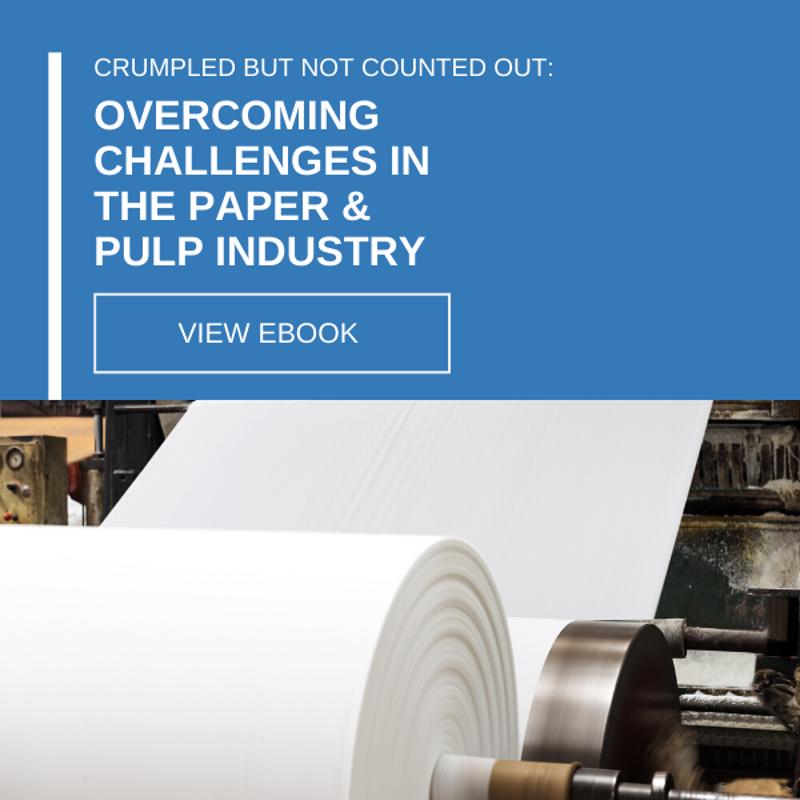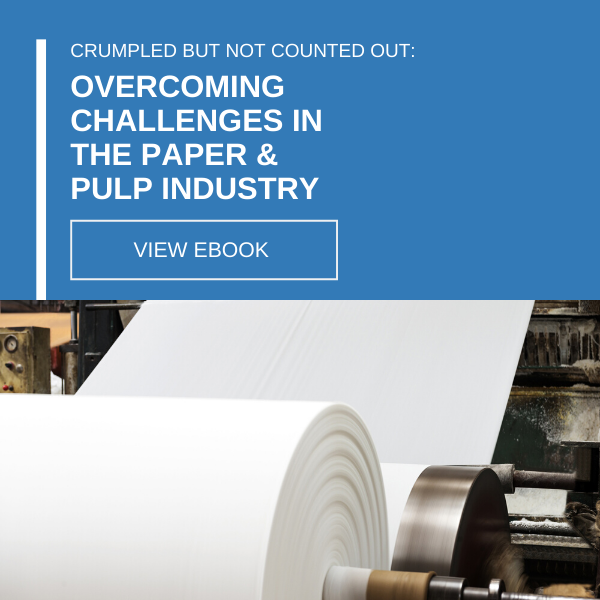-
Subscribe to Blog:
SEARCH THE BLOG
CATEGORIES
- Aerospace
- Asset Maintenance
- Automotive
- Blog
- Building Products
- Case Studies
- Chemical Processing
- Consulting
- Food & Beverage
- Forestry Products
- Hospitals & Healthcare
- Knowledge Transfer
- Lean Manufacturing
- Life Sciences
- Logistics
- Manufacturing
- Material Utilization
- Metals
- Mining
- News
- Office Politics
- Oil & Gas
- Plastics
- Private Equity
- Process Improvement
- Project Management
- Spend Management
- Supply Chain
- Uncategorized
- Utilities
- Whitepapers
BLOG ARCHIVES
- July 2025 (1)
- June 2025 (4)
- May 2025 (1)
- April 2025 (1)
- March 2025 (1)
- February 2025 (4)
- January 2025 (4)
- December 2024 (4)
- November 2024 (2)
- October 2024 (6)
- September 2024 (5)
- August 2024 (5)
- July 2024 (6)
- June 2024 (3)
- May 2024 (3)
- April 2024 (4)
- March 2024 (3)
- February 2024 (4)
- January 2024 (5)
- December 2023 (2)
- November 2023 (1)
- October 2023 (6)
- September 2023 (3)
- August 2023 (4)
- July 2023 (2)
- June 2023 (3)
- May 2023 (7)
- April 2023 (3)
- March 2023 (3)
- February 2023 (5)
- January 2023 (6)
- December 2022 (2)
- November 2022 (5)
- October 2022 (5)
- September 2022 (5)
- August 2022 (6)
- July 2022 (3)
- June 2022 (4)
- May 2022 (5)
- April 2022 (3)
- March 2022 (5)
- February 2022 (4)
- January 2022 (7)
- December 2021 (3)
- November 2021 (5)
- October 2021 (3)
- September 2021 (2)
- August 2021 (6)
- July 2021 (2)
- June 2021 (10)
- May 2021 (4)
- April 2021 (5)
- March 2021 (5)
- February 2021 (3)
- January 2021 (4)
- December 2020 (3)
- November 2020 (3)
- October 2020 (3)
- September 2020 (3)
- August 2020 (4)
- July 2020 (3)
- June 2020 (5)
- May 2020 (3)
- April 2020 (3)
- March 2020 (4)
- February 2020 (4)
- January 2020 (4)
- December 2019 (3)
- November 2019 (2)
- October 2019 (4)
- September 2019 (2)
- August 2019 (4)
- July 2019 (3)
- June 2019 (4)
- May 2019 (2)
- April 2019 (4)
- March 2019 (4)
- February 2019 (5)
- January 2019 (5)
- December 2018 (2)
- November 2018 (2)
- October 2018 (5)
- September 2018 (4)
- August 2018 (3)
- July 2018 (2)
- June 2018 (4)
- May 2018 (3)
- April 2018 (3)
- March 2018 (2)
- February 2018 (2)
- January 2018 (1)
- December 2017 (1)
- November 2017 (2)
- October 2017 (2)
- September 2017 (1)
- August 2017 (2)
- July 2017 (2)
- June 2017 (1)
- April 2017 (3)
- March 2017 (3)
- February 2017 (2)
- January 2017 (2)
- December 2016 (2)
- November 2016 (4)
- October 2016 (4)
- September 2016 (3)
- August 2016 (6)
- July 2016 (4)
- June 2016 (4)
- May 2016 (1)
- April 2016 (3)
- March 2016 (4)
- February 2016 (2)
- January 2016 (4)
- December 2015 (3)
- November 2015 (3)
- October 2015 (1)
- September 2015 (1)
- August 2015 (4)
- July 2015 (6)
- June 2015 (4)
- May 2015 (7)
- April 2015 (6)
- March 2015 (6)
- February 2015 (4)
- January 2015 (3)
CONNECT WITH US
Tag Archives: Pulp and Paper Industry
Every industry on the planet was impacted in some way by COVID-19, but pulp and paper really had a wild ride. Disruptions in the supply chain caused slowdowns and headaches. Manufacturing facilities hustled to make changes due to social distancing, causing more disruption and slowdowns on throughput. That’s not too different from what other manufacturing industries experienced. The difference for pulp and paper was demand.
While demand for many other products dried up, it skyrocketed for pulp and paper, including personal hygiene products (including masks), food packaging products, corrugated packaging and other paper-based materials. The surge in demand was partly due to changes in consumer lifestyle because of the pandemic. Fewer people were shopping in stores, many of which were closed, so Amazon deliveries spiked and along with that, the demand for boxes. Customers weren’t eating out in restaurants, but food delivery went through the roof, and along with that, the demand for delivery packaging. Sometimes the industry kept pace with the rising demand, and sometimes it didn’t — as anyone who tried to get toilet paper during the first months of the pandemic will attest.
As the nation, and the world, returns to normalcy, what’s ahead for pulp and paper? What are the lessons learned from the industry’s wild ride?
Anticipate continued supply chain disruptions
Pulp and paper may continue to see weak or broken links in their supply chains. It’s truly a global industry, and whether its shipping, logistics or other transportation issues snarled by travel bans, supply shortages, rising prices or anything else that affects your ability to get what you need when you need it, those problems aren’t going away quickly. The key is developing alternative supply lines and having the ability to pivot quickly. Maximizing efficiencies can minimize supply chain disruptions, as well. To read more about that, click here.
Focus on core products
Many industries are using this tactic during this still-uncertain time. Divesting, or slowing production of new products or ones that aren’t performing as well as others, allows you to focus your resources on your solid tried-and-trues. Getting back to basics is a powerful way to keep the line running with less supply, fewer people and more disruption.
Take a hard look at your operations as a whole
At USC Consulting Group, we specialize in helping companies find efficiencies. We’re suggesting to our clients across many industries to take a step back and re-evaluate during this time. Have you laid off workers? Even closed plants temporarily? Has your front-office staff been working at home? Now is the time to look at your business through the lens of what you experienced during the pandemic, and think about the practices you can carry with you into the future, including:
- Staffing levels. Do you really need to staff up to pre-pandemic levels? If you’ve gotten the same or similar throughput with fewer people on the line, it might be time to re-evaluate how many people you need to get the job done.
- Facilities. If you’ve closed a facility during the pandemic, does it need to reopen, or can you do the same or more with fewer facilities? Looking at and eliminating redundancies across all of your plants is a great way to boost your bottom line.
- Business travel. Many industries, not just pulp and paper, are reconsidering the necessity of the in-person meeting. Surely they won’t disappear altogether, and perhaps your road warriors won’t be too happy about the decline in their frequent flyer miles. But with everyone now being old pros at Zoom and other videoconferencing platforms, the expense of business travel will be increasingly hard to justify.
- Front office staff. Do you need two accountants in the office 40 hours per week? Does your sales department need to return full time? Even in a traditional manufacturing industry like pulp and paper, people are realizing that front office staff working at home, well, worked. Consolidating job functions or allowing people to continue working from home can shave dollars off of your overhead budget.
Use the SIOP process for forecasting and planning
With changing demand and continued supply chain disruptions, getting the best, clearest look at your operations and creating better strategy decisions is the key to staying agile. Many companies use sales and operations planning, or S&OP, as it is commonly known. We think that process misses a critical piece of the puzzle: inventory. Adding inventory into the mix is just one additional step, but we find it can be the key to the whole thing. When you’re focusing on inventory, it requires more careful planning and elevates the entire planning process up a notch. We like to tell our clients that the purpose of SIOP is making sure you’re having the right conversations about the right things at the right time. And getting what you need when you need it. Core components of a successful SIOP process include:
- Sales forecasting and accuracy measures
- Strategic inventory considerations
- Consistent operational capability analysis (capacity and efficiency)
- Cohesive plan with stakeholder collaboration
- Ability to execute the plan or pivot
- Report and review plan versus actual
- Analyze and implement corrective actions
At USC Consulting Group, we’ve been helping clients improve their operational efficiency for 50-plus years, through all kinds of economic weather. If you’d like to learn more about how we can help you ride out this storm and emerge more effective than before, contact us today.
The novel coronavirus has produced a lot of uncertainty, and for manufacturers in the pulp and paper industry, that includes uncertainty related to demand.
Stores unsurprisingly sold out of the typical products like soaps, hand sanitizers, and spray cleansers, but disposable tissue paper – of all things – was even more difficult to come by, both in the U.S. and worldwide. Indeed, in April, the paper towel market grew a whopping 264% on a year-over-year basis, according to ResearchandMarkets.com, a jump spurred in part by fears of germs clinging to reusable cloths, which could then spread.
For the most part, the pulp and paper industry was able to make the necessary adjustments, as formerly hollowed-out store shelves are full once again. However, as researchers point out in a recent article, heightened demand for paper products is poised to continue for the foreseeable future, a reality that will force manufacturers and shippers to optimize their supply chains if they are to satisfy the long term surge in demand.
Paper use up dramatically
According to the piece published in North Carolina State University journal BioResources, the growth in demand for pulp and paperboard thus far in 2020 has been unprecedented, with production topping 419 million metric tons and consumption reaching over 423 million metric tons worldwide.
“Demand for pulp and paperboard thus far in 2020 has been unprecedented.”
While the growth in toilet paper and paper towels use received much of the attention from the media – attributed largely to panic buying – NC State researchers note the growth was almost across the board, including for such things such as food packaging, corrugated packaging materials, and paper-based medicinal materials and devices.
“During the COVID-19 outbreak, corrugated packaging materials are essential for the transport of food, medicines, and medical equipment,” the authors wrote. “In addition, the self-quarantine may accelerate the growth of online shopping in this emergency period.”
Online sales have indeed proliferated over the past several months, a rare bright spot as the shutdown rocked numerous industries. In March, for instance, online sales rose 25% and online grocery shopping soared 100% in terms of daily receipts, USA Today reported from a study done by Adobe Analytics.
Among the items consumers bought in droves were face masks, many of which are made from specialty paper. Purchases for such virus protection products – including hand sanitizers and disposable gloves – jumped 807% in March, USA Today reported from the data.
“We’ve all seen the memes and photos of what some store shelves look like as people prepare for the worst,” Nate Smith, group manager of product marketing at Adobe Analytics, said in March. “Add to that the fact that many people are also trying to avoid large gatherings and public places, and it’s easy to see why online shopping for COVID-19 related items is up.”
Out of an abundance of caution
In the interest of safety and improving Americans’ sense of security amid rampant uncertainty, several states around the country have implemented mask mandates, such as Washington, Maine, Massachusetts, California, Texas, and Rhode Island. Indeed, numerous retailers have implemented policies that require customers to wear them, including Target, Best Buy, Walmart, and Costco.
For its part, the National Retail Federation has called on retailers of all sizes to follow big box stores’ example by installing their own mandates regarding face coverings.
“Workers serving customers should not have to make a critical decision as to whether they should risk exposure to infection or lose their jobs because a minority of people refuse to wear masks in order to help stop the spread of the deadly coronavirus,” NRF said in a statement issued July 15.
“The sanitary paper product manufacturing market may near $108 billion by year’s end.”
With stores and governments globally taking similar measures, sanitary paper product output is expected to pick up the pace, even more than it has already. Worldwide, the sanitary paper product manufacturing market may near $108 billion by year’s end, up from just shy of $66 billion in 2019, according to forecasts from Research and Markets.
For these reasons and more, “unprecedented opportunities” are in the offing for the pulp and paper industry, according to NS State University researchers. In addition to specialty paper being used for face coverings, it can also be leveraged for various medical products, such as microfluidic chips, bio sensors, electrodes, and biological test paper. Furthermore, the authors point to the growing interest in biorefinery processes, which can be used in biomedical applications like drug delivery, wound dressing and tissue engineering.
“The COVID-19 pandemic is posing serious challenges to the pulp and paper industry due to its disruption to global industrial supply chains,” the researchers said in their conclusion. “However, it has potential to create positive demand for a variety of paper products such as personal hygiene paper products, food packaging products, corrugated packaging materials, and medical specialty papers. Thus, traditional pulp and paper manufacturing operations are expected to be transformed, upgraded, and integrated to reduce the risks associated with this pandemic.”
How Charmin rose to the occasion
Producers may want to draw from toilet paper giant Charmin’s example for guidance. As ABC News reported, when toilet paper sales skyrocketed in March and April, Proctor & Gamble, which owns Charmin, was able to ramp up production without jeopardizing the health of its workers. The company did this by issuing personal protective gear not just to staff on the assembly line, but for anyone that entered its plants. P&G Human Resources Director Tommy Montoya told ABC News that this strategy enabled the company to operate around the clock – 24 hours a day, seven days a week – all while seamlessly isolating workers should they get sick since the plants are structured as zones, making them easier to cordon off if necessary.
Whatever your line of work, an efficient, fully optimized supply chain is more important than ever. USC Consulting Group can help you make it better than ever. Contact us today for efficiency improvements done right.
The events of 2019 may have seemed like a continuation of the same old story, as paper products appear to be in use less and less. The examples are legion, with contactless payments supplanting cash, e-readers continuing their popularity with much of the public and shoppers toting around reusable fabric bags in lieu of paper or plastic. The newspaper industry also seems to be struggling, as more companies either folded entirely in 2019 or transitioned to entirely digital. According to estimates from the Pew Research Center, newspaper circulation for weekdays in 2018 fell 8% from the previous year to 28.6 million and 9% for the Sunday or weekend edition to 30.8 million. For print alone, the annual decline was even larger.
However, upon closer inspection, the pulp and paper industry remains in excellent shape in terms of profitability. And based on a newly released forecast, it appears to be turning over a new leaf by seamlessly adapting to the trends, behaviors and realities of day-to-day life for the average American and the world at large.
“Earnings for the paper and pulp industry is forecast to surge by a compound annual growth rate of nearly 5% between now and 2024.”
As detailed by 360 Market Updates, total earnings for the paper and pulp industry is forecast to surge by a compound annual growth rate of nearly 5% between now and 2024. This would translate to roughly $79.6 billion in revenue in the U.S. alone during that time frame, up from the recorded $63.3 million in 2019.
Greeting cards remain ‘hallmarks’ of affection
Part of the reason for the pick-up in paper and pulp profitability is people continue to rely on said products for use at home and those with whom they come into contact. Greeting cards are a classic example. While the digital age has undoubtedly taken hold in modern life — evidenced by the ubiquity of smartphones, automation and wearable devices — birthday cards and Christmas cards remain as popular as ever. In fact, on an annual basis, roughly 1.5 billion seasonal holiday cards are sent out during Christmas time, while 6.5 billion greeting and holiday cards of all types are mailed to friends and loved ones.
Speaking with CNBC’s “On The Money,” Hallmark Chief Marketing Officer Lindsey Roy noted greeting cards serve as a form of expression that can’t be quite replicated as effectively via e-mail or other electronic methods.
“You know the core of our business is really the individual greeting cards, the ones you pick out specifically for somebody else,” Roy explained. “It really is still a thriving and stable business.”
She further stated that while many people assume greeting cards are going the way of records, hard and soft cover books or compact discs, greeting cards have tangible benefits and “break through the clutter” of constant texting and messaging via social media. They also remain eminently affordable, ranging from a $1 to $10 at the most.
Most prefer printed books to e-readers
Even the notion that physical books are on the outs is a mischaracterization. Numerous reports show that they’re consistently among the most sought after gift items on holiday wish lists for children as well as adults. Indeed, in a recent poll conducted by Gallup, more than one-third of respondents said they’d read at least 11 books in the past year and 53% of young adults said they’d read between one and 10 books in the previous 12 months. Additionally, close to three-quarters said they preferred printed books whose pages they could actually turn versus e-readers, tablets or audio books.
Speaking of gifts, e-commerce has revolutionized the ways in which people shop and retail executives suspect that internet-based shopping may one day supplant brick-and-mortar as the most popular means. The products purchased must be packaged and shipped, and for the most part cardboard boxes serve as the safest most convenient way among small-business owners as well as major conglomerates like Amazon and Overstock.com. On this past Black Friday – the day immediately following Thanksgiving – over 93.2 million people in the U.S. shopped online, according to the National Retail Federation. Much of the surge in online traffic — aside from the deep discounts Black Friday is known for — was attributable to free shipping promotions frequently offered by retailers as further incentive to buy. Paper and corrugated cardboard remains affordable enough for retailers to absorb the cost of shipping and handling.
States and consumers choosing paper over plastic
The comeback of paper is also evident in grocery stores as more people are cognizant of the environment and what they can do to lower their carbon footprint. As previously referenced, many shoppers won’t leave home without their fabric-lined bags to conveniently transport their food items from stores to cars and finally to their homes. But they’re also using paper bags more often than in previous years. As documented by the National Conference of Legislatures, this is largely due to more states banning the use of single-use bags, as California, Connecticut, Delaware, Hawaii, Maine, New York, Oregon and Vermont all have statewide prohibitions in place. The Golden State was the first to do so back in 2014 and other states are currently considering whether to follow suit, such as Massachusetts, as Boston currently has a citywide ban on plastic bags. Paper bags have an ability to break down and can be recycled, which can’t be said for the single-use plastic variety. The vast majority of Americans acknowledge as much as a separate survey also conducted by Gallup found 73% of respondents consider paper bags to be less harmful for the planet compared to plastic (22%).
This isn’t to say that the paper and pulp industry is fully on easy street. Based on calculations from Resource Information Systems, graphic paper — the kind traditionally used for newspaper printing — has fallen off in consumption substantially worldwide, down 6.1% between 2010 and 2018. But other paper derivatives — such as tissue, carton board and container board — have helped to picked up the slack, nullifying some of the blow found in graphic paper usage.
Industry executives have also found ways to reduce costs without sacrificing quality. Wisconsin Paper Council President Scott Suder told the Wisconsin Economic Development Corporation that the Badger State has been at the forefront in this effort by increasing productivity of specialty products and packaging papers through value-added adjustments in manufacturing.
“We’re seeing paper industry innovation that increases sustainability, and significant advancements in environmental stewardship across the industry,” Suder said.
Moral of the story, paper and pulp is on a roll. USC Consulting Group can help streamline asset utilization and productivity improvements so your business is always ready for the next chapter in product development and sales effectiveness.











